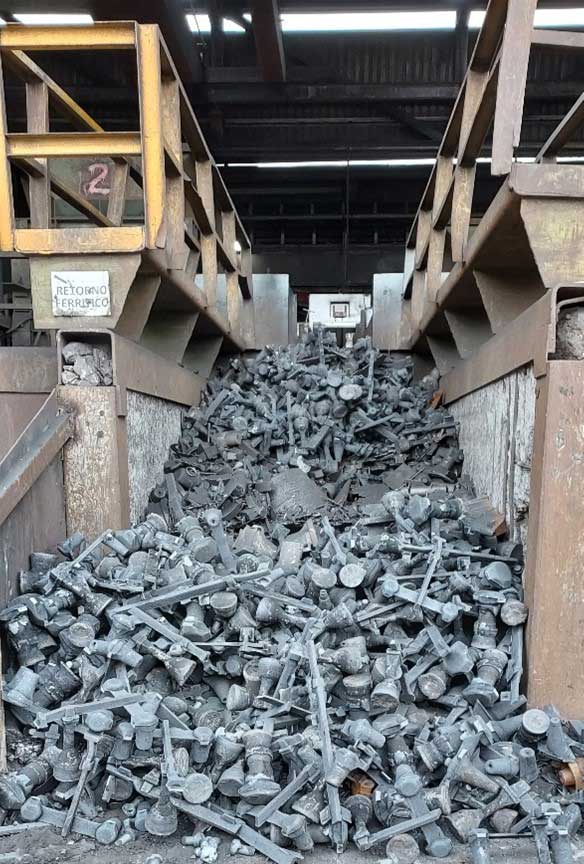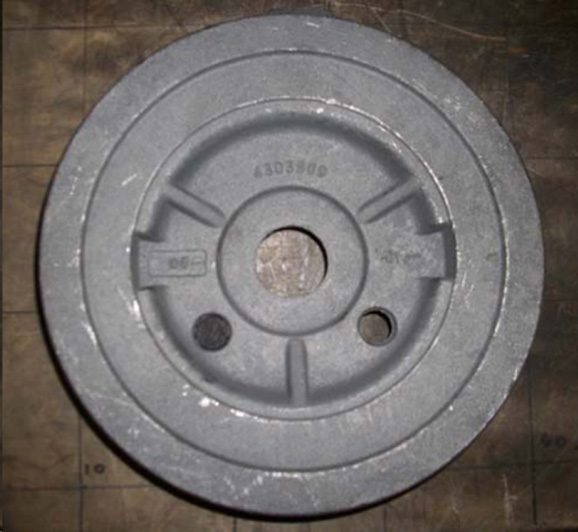ECOFUNNOD
SELECTED SCRAP FOR THE MANUFACTURE OF NODULAR CAST IRON PARTS
The production of nodular castings currently uses around 40% of primary ingot, in addition to the return of castings and a low percentage of scrap (5%), with the addition of alloying elements (manganese (Mn), nickel (Ni), copper (Cu)...). The ingot used is produced from iron ore (Fe), which has a very high impact on CO2 emissions and the energy required to manufacture it, as well as a higher price (around 25-35% higher than scrap). It is well known that the replacement of ingot with scrap is not an easy process due to the variability of scrap, its composition and the need to increase the percentage of inoculant required, whereby previous experiences show up to about 15% of scrap being used but only in some types of alloys.
FURESA, a manufacturer of high added-value nodular cast iron parts for various sectors, leads FUNDITREN and has collaborated with TECNALIA Technology Centre in the project implementation.

DRIVING FACTOR



 OBJECTIVES
OBJECTIVES
- Develop a new process for the manufacture of nodular cast iron parts from selected scrap.
- Reduce the percentage of primary ingot used in the furnace charge from the current 40% to 15% or lower.
- Reduce the addition of alloying elements (Mn, Ni, Cu...) by about 25%.
- Reduce carbon footprint and emissions by approximately 85%.
- Improve competitiveness by reducing the cost of raw materials and energy consumption.
- Increase FURESA's market share by 5%.
 RESULTS
RESULTS
- Process using a maximum of 10% primary ingot compared to the previous 40%, with an average percentage of 7%, in order to meet the specifications for railway parts.
- Approximate reduction of 31% in energy consumption, 80% in ingot consumption and 28% in slag generation.
- Reduction in the environmental impact of around 85% for categories such as acidification, eutrophication, climate change and ozone depletion.
- 2% reduction in part weight.
- €680,000 reduction in total annual manufacturing costs by using 10% ingot and €1,460,000 annual reduction by using 5% ingot.
 CONCLUSIONS
CONCLUSIONS
- The study of the effect of the use of scrap for the production of nodular iron, the control of process variability (raw materials and their composition) and the improvement of the working methodology with the incorporation of historical casting data (composition of fillers, chemical analysis, results of mechanical tests) has been key to reducing the rejection of parts and reducing the costs of raw materials, as well as the uncertainties inherent in the process.
- Thanks to the study of the results of the Life Cycle Analysis in conjunction with IHOBE, an environmental improvement in the manufacturing process of lightened moulds has been identified and will be proposed as a new development project, based on the reduction of the weight of the moulds and their direct manufacture as joined cores.
ENVIRONMENTAL
TECHNICAL
ECONOMIC
COMMERCIAL
ON THE MARKET




